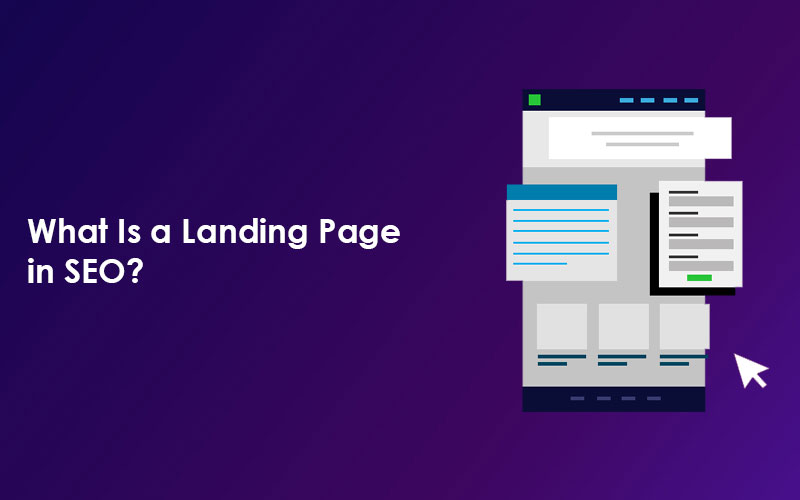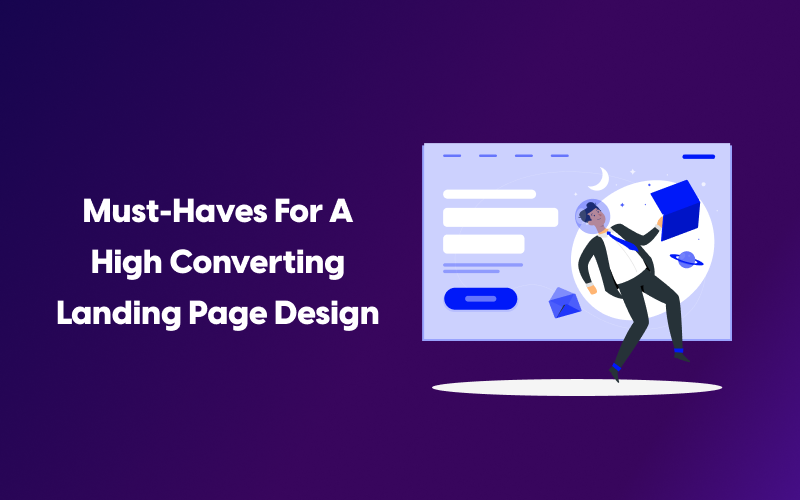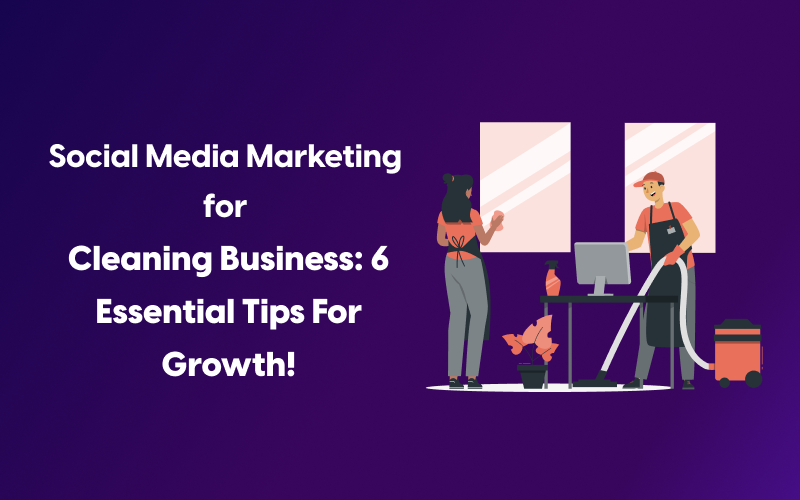Have you ever wondered how some websites seem to effortlessly attract hordes of eager visitors while others struggle to gain even a trickle of attention? Well, my curious friends, the secret lies in the enchanting world of Landing Pages and their indispensable role in the realm of SEO.
Get ready for an exhilarating journey of discovery as we unlock the hidden potential of landing pages and explore their profound impact on search engine optimization. Whether you’re a seasoned digital marketer or a curious business owner looking to boost your online presence, prepare to immerse yourself in a captivating world of mesmerizing headlines, persuasive content, and the enchanting art of conversions!
What Is a Landing Page? The Truth!
A landing page is a separate web page specifically designed with a single, focused objective in mind. It serves as the gateway to your website and is carefully crafted to guide visitors toward a particular action or conversion goal. Unlike regular web pages, which offer a variety of information and navigation options, a landing page keeps distractions to a minimum, ensuring that visitors stay on track.
Landing pages are often created for targeted marketing campaigns, tailored to a specific audience or goal, and integrated with tracking tools for performance measurement and optimization. A web page with a focused purpose, minimal navigation, and a strong call-to-action is likely a landing page.
What Is the Difference Between a Landing Page and an SEO Page?
In the vast digital landscape, landing pages and SEO pages don different capes, each with a unique mission and superpowers.
An SEO page, the master of search engine rankings, strategically weaves itself into the web of keywords and phrases, aiming to charm the algorithms and secure a high rank in search results. With meta tags as its secret weapon and keyword-rich content as its armor, it beckons organic traffic and unveils valuable information to curious visitors.
On the flip side, a landing page emerges as the enchanting sorceress of conversions. Tailored for specific campaigns, it captivates visitors with its focused allure, casting spells of persuasion to beckon them into action. With a CTA as its magic wand and a visually appealing layout as its charm, it guides visitors down the path of transformation – from curious prospects to loyal customers.
Though they operate in different realms, both landing pages and SEO pages play integral roles in the digital marketing saga. SEO pages pave the way, drawing in organic explorers from the vast lands of search engines. Meanwhile, landing pages stand at the gateway, ushering in these visitors and transforming them into superheroes of conversions.
In this ever-evolving digital universe, the dynamic duo of landing pages and SEO pages work in harmony, each fulfilling its purpose with flair and finesse, ensuring digital success for businesses far and wide.
The Impact of Landing Pages on SEO: Do Landing Pages Improve SEO?
Landing pages play a crucial role in SEO, affecting website performance and user experience in various ways. For example, Quality Score, a metric used by search engines like Google to determine ad rankings, is also impacted by landing pages. Websites with higher Quality Scores often enjoy lower costs per click and better ad positions, resulting in more efficient ad campaigns and increased visibility.
The bounce Rate reduction is another significant impact of landing pages on SEO. High bounce rates indicate that visitors are leaving a website quickly without engaging further. By creating well-designed and relevant landing pages, businesses can keep visitors on the right path and encourage them to explore the site further, ultimately leading to improved SEO rankings.
Effective landing pages are distinguished by their emphasis on Enhanced User Experience (UX). A satisfying UX results in longer user engagement, reduced bounce rates, and improved conversion rates. Research indicates that a staggering 88% of online customers are unlikely to revisit a website after a negative experience, underscoring the critical role of user-friendly landing pages in achieving overall SEO success.
Keyword Relevance is key when it comes to targeted SEO campaigns. Landing pages are optimized for specific keywords, allowing businesses to attract relevant organic traffic and improve their rankings for those specific terms. Targeting relevant keywords on landing pages results in a more streamlined and effective SEO strategy.
Furthermore, Link Building is empowered by shareable landing pages. High-quality, valuable content on landing pages encourages other websites to link back, which significantly impacts a website’s domain authority and search engine rankings. In fact, studies show that pages with higher numbers of backlinks tend to rank higher in search results, proving the significance of link-building through landing pages.
Do Landing Pages Rank on Google?
Absolutely! Don’t underestimate the power of landing pages in the eyes of search engines. While their primary purpose is to convert visitors, they can still rank on Google and other search engines. Just like any other web page, landing pages are indexed based on their content and relevance to user search queries.
An interesting study by HubSpot found that businesses with 10 to 15 landing pages experienced a remarkable 55% increase in leads. This indicates that having multiple well-optimized landing pages can significantly impact lead generation and attract more organic traffic.
Google’s search algorithms prioritize the value and relevance of landing page content when determining its ranking. A landing page that offers valuable information and aligns with user intent has a higher chance of obtaining a favorable position in search engine results.
Moreover, an insightful study by Backlinko revealed that long-form content tends to rank higher on Google. This underscores the importance of crafting comprehensive landing pages that provide in-depth insights and value to users.
How Do I Create an SEO Landing Page? SEO Landing Page Best Practices!
Crafting high-converting landing pages is an art that requires precision and creativity. These pages serve as the gateway to capturing visitors’ attention and guiding them towards taking a specific action, ultimately leading to conversions.
As digital marketing guru Neil Patel aptly puts it, “Landing pages contribute to conversion rate optimization and literally run your business when you’re not there.” This quote highlights the significant impact that well-designed landing pages can have on a business’s success, working tirelessly to convert visitors even when business owners are away.
But what’s the secret of creating high-converting landing pages? Get ready as we are about to reveal some of the best practices for creating a highly SEO-optimized ranking page for much higher rankings than ever before!
1. Conducting Market Research: Understanding Your Audience’s Desires
Market research is like the magic wand that reveals the secrets of your audience’s hearts. It’s that vital step where you gather precious insights about your target customers – their preferences, desires, and even those pesky pain points. Armed with this knowledge, you become the wizard behind offerings that leave your audience enchanted!
Picture this: You’re on a treasure hunt, unearthing valuable data that shapes your products or services. You’ll discover exactly what your audience cherishes the most, like discovering hidden gems that resonate with their every wish.
Moreover, market research helps you to have a heart-to-heart with your audience through surveys, focus groups, and interviews. It’s like hosting a delightful tea party with your customers, where you can truly understand their thoughts, feelings, and desires.
2. Crafting Irresistible Headlines: Hooking Your Visitors From the Start
A compelling headline is like a magnetic force, drawing in curious eyes and enticing them to read further. It’s the first impression that can make or break the success of your content.
To craft an irresistible headline, start by understanding your audience and their desires. What do they care about? What problem are they looking to solve? Tailor your headline to address their needs and speak directly to their emotions.
Keep it concise and impactful. A clear and to-the-point headline is more likely to grab attention. Use powerful words that evoke curiosity, excitement or a sense of urgency.
Don’t shy away from using numbers or statistics. Headlines that include numbers tend to perform well as they promise specific and tangible benefits. For example, “7 Proven Ways to Boost Your Productivity” immediately piques interest.
Inject a touch of personality or wit into your headline. A little humor or playfulness can make your content stand out and create a memorable impression.
3. A/B Testing and Optimization: Fine-Tuning for Peak Performance
Are you afraid of leaving your website’s performance to chance? Fear no more! A/B testing and optimization are here to fine-tune your digital masterpiece for peak performance. It’s time to embrace the power of data-driven decisions and let your website shine.
A/B testing, also known as split testing, is a game-changer in the world of digital marketing. It involves creating two or more variations of a landing page or element and testing them simultaneously with real users. By analyzing the data and comparing performance, you can identify which version resonates best with your audience.
The beauty of A/B testing lies in its ability to uncover insights that lead to optimization. Want to boost conversions, click-through rates, or engagement? A/B testing allows you to pinpoint the winning formula that works wonders for your website’s success.
Remember, even small changes can make a big difference. Tweaking a headline, adjusting the color of a CTA button, or modifying the layout can significantly impact user behavior and overall performance.
4. Simplifying the Conversion Process: Reducing Friction for Users
Imagine visitors arriving at your website, brimming with curiosity and eagerness to explore your offerings. But alas, instead of getting hooked and converting, they bounce away like a rubber ball hitting a wall. The culprit? Friction in the conversion process. It’s high time to simplify things and create a smoother journey for your users.
The key to reducing friction begins with streamlining your website’s design and navigation. Provide clear calls-to-action (CTAs) and user-friendly menus, ensuring visitors can easily find what they’re seeking. A clutter-free layout guarantees a seamless and delightful user experience.
Next, tackle those pesky forms. Lengthy and intrusive ones can send users running in the opposite direction. Adopt a minimalist approach, capturing only essential information, and consider using autofill options for added convenience.
Don’t forget the mobile users! Embrace mobile-friendliness with a responsive design to cater to the growing number of mobile visitors. A smooth experience across devices is a game-changer in minimizing friction.
Lastly, speed matters. Slow-loading pages are the ultimate buzzkill. Optimize your website’s performance to keep visitors engaged and eager to explore more.
5. Harnessing the Power of Visuals: The Psychology of Persuasion
Visual information holds a special place in the brain, proven by studies that reveal its rapid processing compared to text. In just 13 milliseconds, the human brain can process an image, making visuals an efficient way to convey information and create a lasting impact.
To leverage this power, incorporate captivating images, compelling videos, and engaging infographics in your marketing strategy. They have the ability to evoke emotions, narrate your brand’s story, and leave a memorable impression on your audience.
So, let visuals be your persuasive ally, offering a swift and impactful way to connect with your audience, regardless of language or time constraints. With visuals at the helm, you can create a captivating and memorable brand presence that lingers in the minds and hearts of those you seek to engage.
Wrapping Up!
So, that’s the end, dear readers. We hope this journey through the enchanting world of landing pages in SEO has left you enlightened and inspired. With their singular focus on conversions, landing pages play a pivotal role in attracting organic traffic and elevating your online presence.
If you’re eager to unlock the true potential of landing pages for your business, fear not! Our team of SEO experts is at your service. From designing captivating pages to optimizing content for search engines, we have the expertise to drive results. Let us be your trusted partner in taking your SEO game to new heights.
As we bid farewell, remember that the power of landing pages lies in their ability to captivate and convert. Embrace this knowledge, and may your journey with landing pages be remarkable. Thank you for joining us, and here’s to your continued success in the world of SEO!




